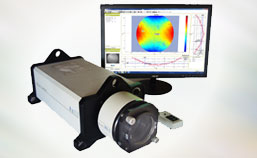
Summary
The main culprit to interferometer failure is a computer crash due to drive failure. The main cost is often lost production due to down time. Planned upgrades of production systems can save hundreds of thousands of dollars in lost production. After 10 years it is best to plan an upgrade of all systems when production will not be affected.
After 10 years of operation over ~95% of interferometer systems will have failed. In ten years operating systems, electronics, and hardware drivers are incompatible with analysis software developed ten years earlier. These factors signal the need to upgrade.
Old Reliable
After years of reliable service it is easy to assume your interferometer will start tomorrow. Decreases in system performance are hard to detect over a long period. Like an aging car that seems adequate until you drive a new one, then you realize how worn the old car is. So what drives interferometer failure, and what must be considered when you upgrade your system?
The main drivers for having a dead interferometer are laser, moving parts (motors and piezos), electronics (driver boards and camera) and computer. The laser is considered a maintenance component and will not be discussed here.
 When motors, piezos, cameras or electronic driver and frame grabber boards fail replacements often do not work with the present operating system or analysis software. If a component can be found, software drivers are usually not available. So in all cases the ability to repair an interferometer depends on the computer and software.
When motors, piezos, cameras or electronic driver and frame grabber boards fail replacements often do not work with the present operating system or analysis software. If a component can be found, software drivers are usually not available. So in all cases the ability to repair an interferometer depends on the computer and software.
Computer Crashes
The main culprit in computer reliability is the “disk drive”. (Solid State and Hard Disk drives reliability are essentially equal) Computers are reliable for 3 years then start a rapid 12% failure rate. A blog post titled “How long do disk drives last?” by Brian Beach; November 12, 2013 presented the data shown here. Computerized interferometers follow the same failure curve.
If a computer drive crashes in the first few years, cost is driven by the time to purchase a new disk drive, installing it and the reloading the drivers and software to bring the system up. The drive upgrade is simplified with a mirrored drive maintained in stock. This is not true for 10-year-old systems. At some point hardware drivers are no longer available, operating systems do not recognize the analysis software and electronics are incompatible with computer busses and interfaces. This is the time for a system upgrade.
Upgrade Cost
The major cost to an interferometer upgrade can be lost production. At a minimum assume one full week downtime to upgrade a system. Depending on utilization and backup test capacity this one-week could be costly. Shipping just $2MM per year through an interferometer will cost ~$8,000 per day in down time, 3X more than an upgrade costs! Considering downtime here are some rules of thumb regarding when to upgrade.
Rules of Thumb to Minimize Cost
Systems Used on Production Critical Path
< 10 years old, drive failure
Action: Replace drive with a mirrored disk drive that is maintained in stock for easy replacement
Time to revive: 1 day
Cost: ~$8,000 lost production if on critical production path and ~$1,000 if not on critical path
5 to 10 years old, failure other than drive
Action: Upgrade system
Time to revive: 10 days to upgrade + 5 days to identify upgrade company
Cost: Upgrade price ($15,000 to $35,000) + ~$110,000 lost production if on production critical path
5 to 10 years old, planned upgrade
Action: Upgrade during annual maintenance cycle (production shutdown)
Time to revive: 7 working days (purchase decision is done before hand and planned for during shutdown)
Cost: Price of upgrade ($15,000 to $35,000)
All Cases (Critical path and NOT on production critical path)
>10 years old, time to plan an upgrade
Action: Upgrade during annual maintenance cycle (production shutdown)
Time to revive: 7 working days (purchase decision is done before hand and planned to minimize shutdown)
Cost: Upgrade price ($15,000 to $35,000)
Minimal Cost, Minimal Risk Plans Summary
<10 years: If drive fails replace with mirrored drive maintained in stock
>10 years: Upgrade during shutdown or when convenient
Conclusion
An interferometer will not last forever, yet with simple planning cost and risk can be minimized. During the first ten years the primary risk is computer drive failure. After ten years the software and hardware architecture becomes obsolete increasing the difficulty to simply fix a failed component or drive. The major cost risk is failure during production. Therefore maintaining a mirrored drive for each interferometer is the best insurance policy up to ten years. After ten years planned upgrades are much less expensive than lost production.